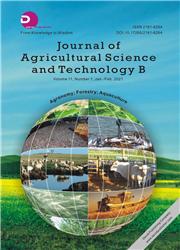Identification of Citrus Canker on Citrus Leaves and Fruit Surfaces in the Grove Using Deep Learning Neural Networks
引用次数: 2
Abstract
Citrus canker (Xanthomonas axonopodis pv. citri) is a bacterial disease of citrus tree leaves and is the most feared citrus disease, affecting all types of important citrus crops. Currently, there is no cure for citrus canker but experimental prevention methods. Citrus canker is a quarantine disease, meaning that citrus fruits with citrus canker cannot be transported between countries or markets, and this is a huge threat to the citrus production industry. Citrus exports to international markets are highly restricted today due to fruit diseases such as citrus canker because fruits are quarantined for bigger world markets such as European Union (EU) and United States of America citrus markets. For a row-guided robot to detect citrus canker infections on leaves and fruits in the grove, there is a need for an accurate method that can detect defects on the leaves and surface of fruits, classify citrus leaf and fruit images on-the-go, and discriminate citrus canker from other defects. Previous methods in machine vision could detect defects on the surface of citrus fruits, though, the methods were unable to differentiate defects. The neural network system invents edge detection, and automatically learns to characterize the image in terms of edges that appear in the image, and give a more succinct, higher-level representation than raw pixels. A standard strategy in deep learning neural networks is to run the learning algorithm with many optimization parameters and pick the model that gives the best performance on a validation set. The authors are optimistic that identification of citrus canker on citrus leaves and fruit surfaces in the grove could be one of the agricultural problems that can potentially benefit from deep learning neural network approach, and consequently, help to eradicate the predicaments facing the citrus industry.基于深度学习神经网络的柑桔叶和果表面溃疡病识别
柑桔溃疡病(Xanthomonas axonopodis pv.citri)是一种柑桔叶片细菌性疾病,是最令人担忧的柑桔病害,影响着所有类型的重要柑橘作物。目前,柑橘溃疡病还没有治愈方法,但有实验性的预防方法。柑橘溃疡是一种检疫性疾病,这意味着患有柑橘溃疡的柑橘类水果无法在国家或市场之间运输,这对柑橘生产行业构成了巨大威胁。由于柑橘溃疡等水果疾病,如今对国际市场的柑橘出口受到高度限制,因为欧洲联盟(欧盟)和美利坚合众国柑橘市场等更大的世界市场对水果进行了隔离。对于行引导机器人检测小树林中叶片和水果上的柑橘溃疡感染,需要一种准确的方法来检测水果叶片和表面的缺陷,对移动中的柑橘叶片和水果图像进行分类,并将柑橘溃疡与其他缺陷区分开来。以前的机器视觉方法可以检测柑橘类水果表面的缺陷,但这些方法无法区分缺陷。神经网络系统发明了边缘检测,并自动学习根据图像中出现的边缘来表征图像,并提供比原始像素更简洁、更高级的表示。深度学习神经网络中的一个标准策略是运行具有许多优化参数的学习算法,并在验证集上选择性能最佳的模型。作者乐观地认为,识别柑橘叶片和小树林果实表面的柑橘溃疡病可能是一个农业问题,可以从深度学习神经网络方法中受益,从而有助于消除柑橘行业面临的困境。
本文章由计算机程序翻译,如有差异,请以英文原文为准。
求助全文
约1分钟内获得全文
求助全文

 求助内容:
求助内容: 应助结果提醒方式:
应助结果提醒方式:


